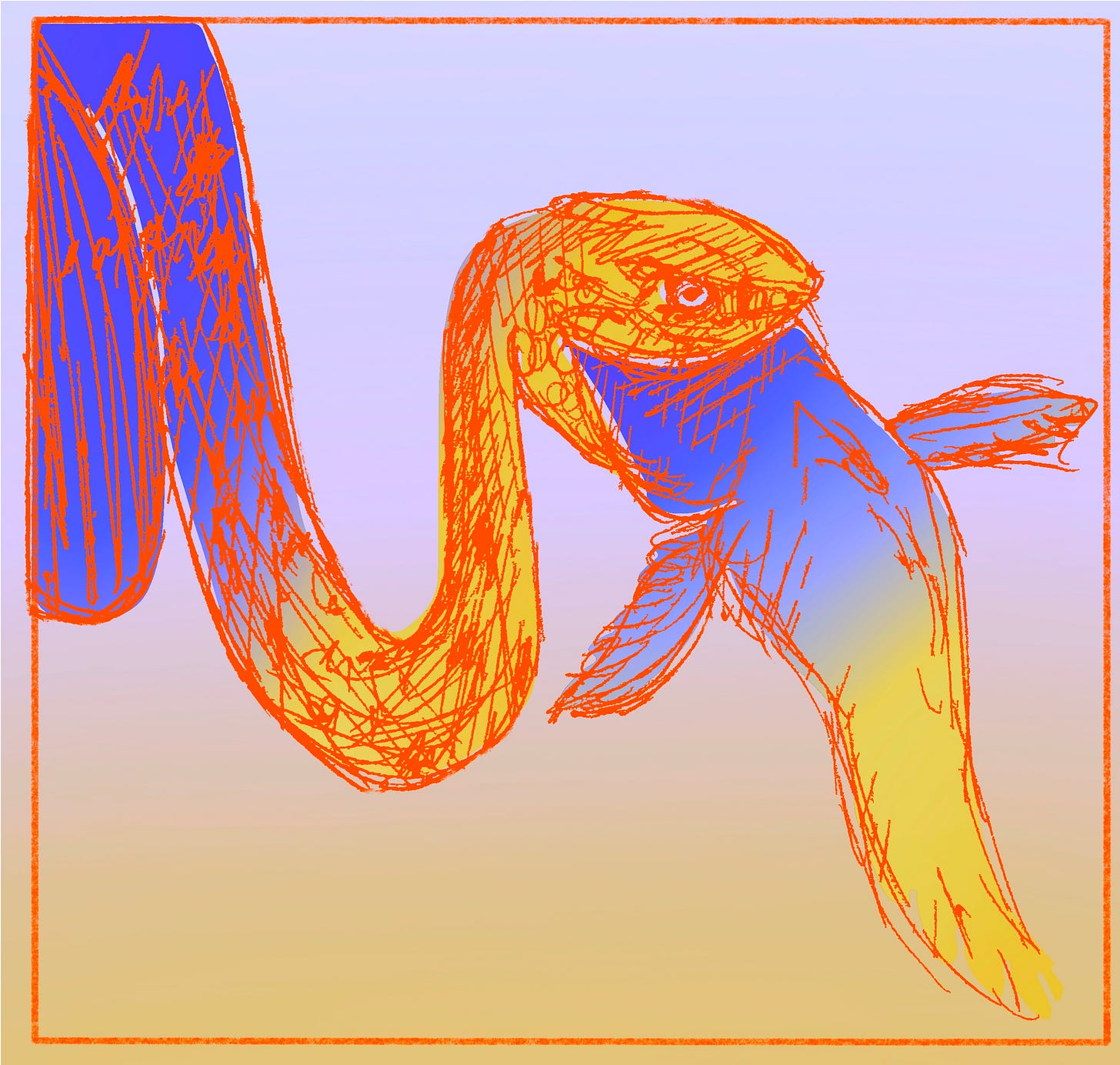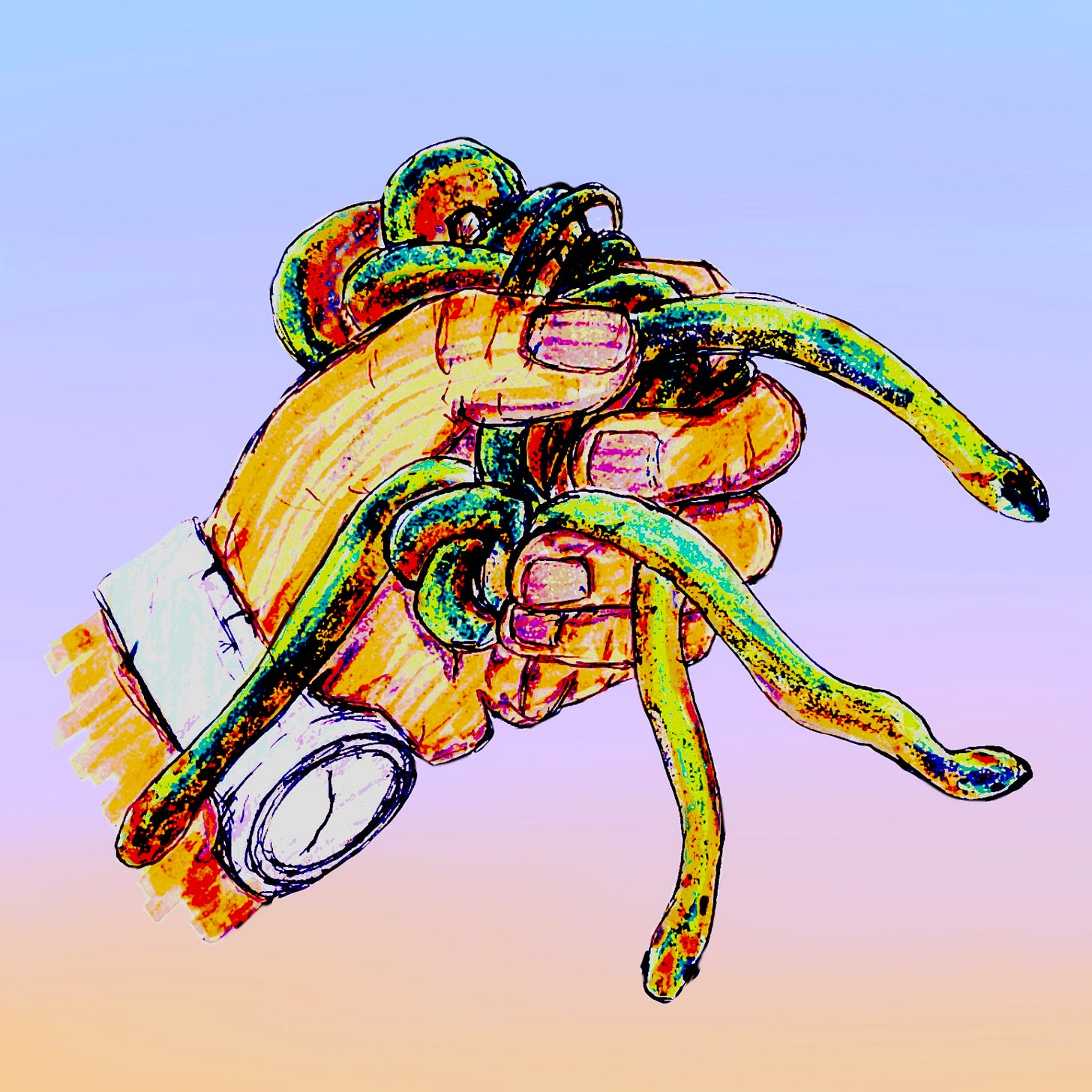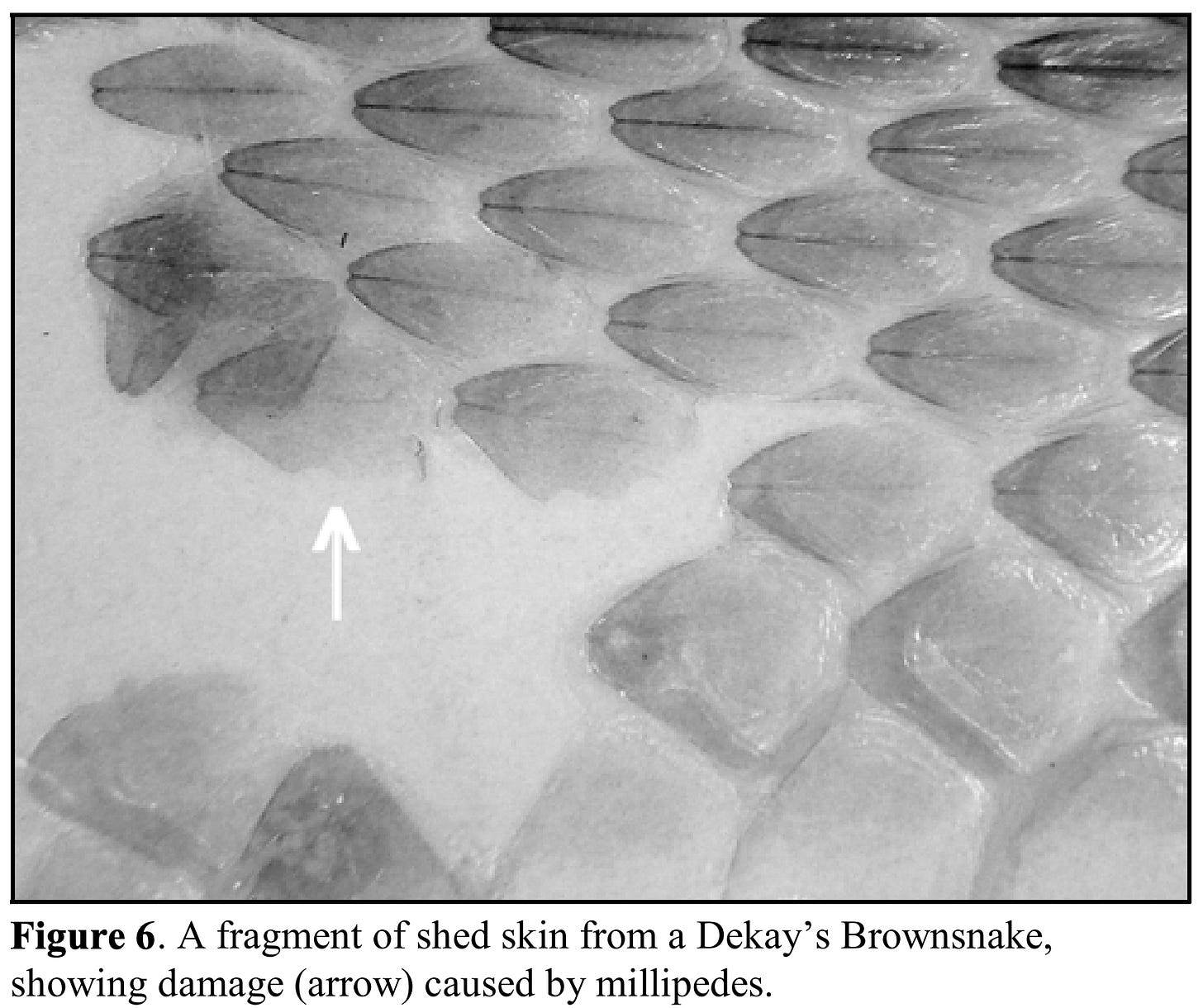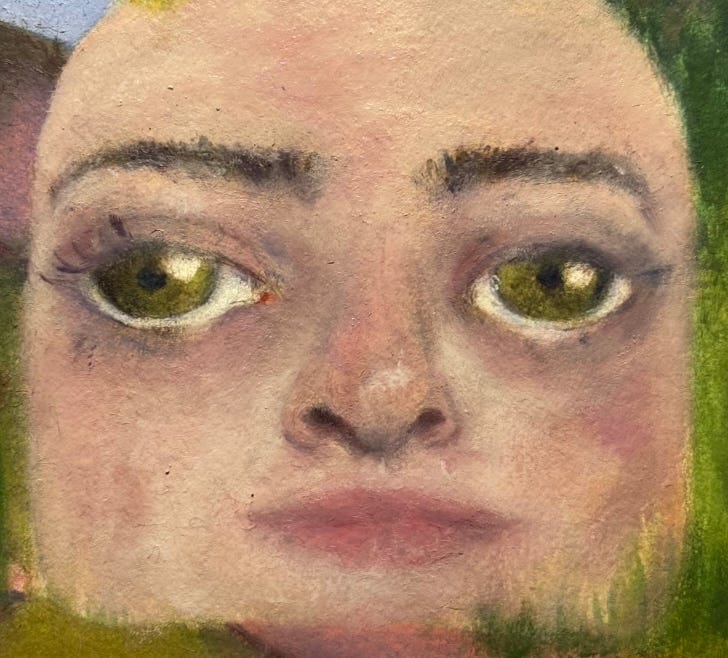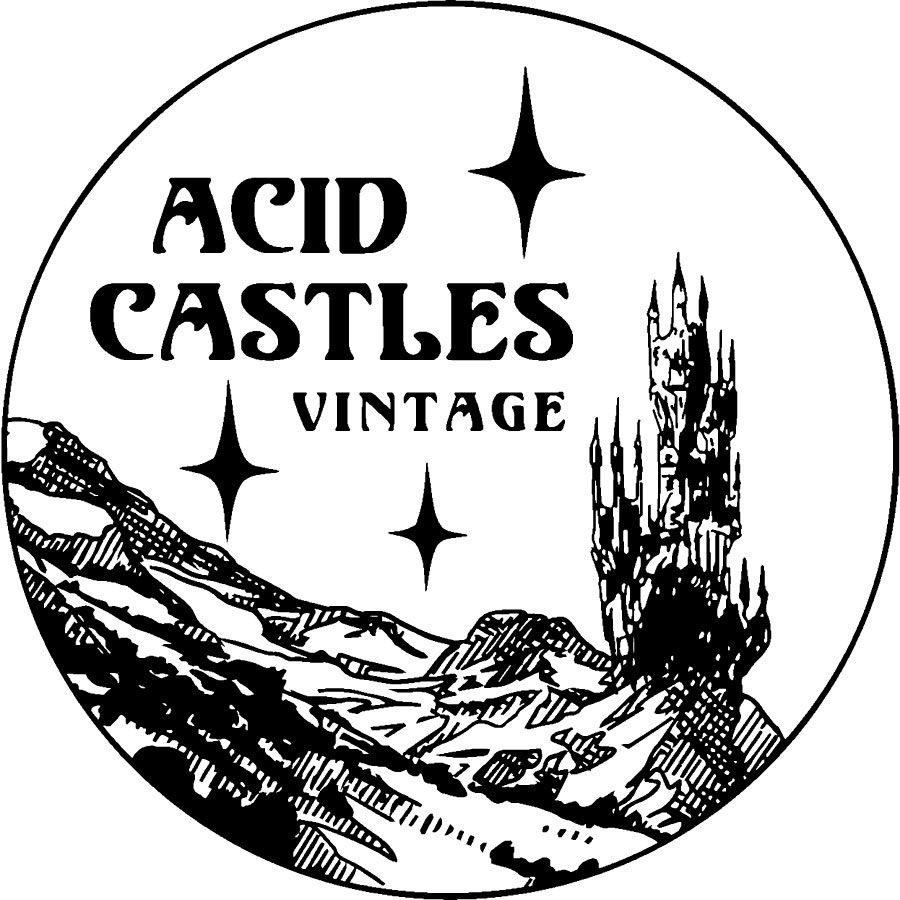Pretty Pretty Research
proxy snakes and the city ecosystem 𓆑
Hello!
I found a photo of a snake eating a fish on my instagram a while ago.
Something about this photo stood out to me. For one thing, I know I’ve always thought it was cool that snakes sometimes eat fish - trying to imagine how that would play out conjures imagery of wingless dragons shimmying through lakes and streams. Additionally, I could tell by the similarity in size between this snake and it’s prey that it didn’t seem particularly well-equipped for a meal this big. So that interested me too; imagining a snake pursuing something totally beyond the scale (ha) of what they typically eat. Did the snake perceive itself to be larger than it actually is? How do snakes interpret their own size relative to their differently sized neighbors?
One ecologist in New Jersey has spent a lot of time asking questions like these about the species of snake in that photo. This species is apparently a good proxy (like an example to base more general theories on) for what city life is like for reptiles.
His research falls under a subset of ecology called urban ecology, which applies the same methods of studying forest ecosystems or wetland ecosystems to city ecosystems. Urban ecology essentially asks the question: how does life interact in a city?
To be more specific, he writes papers about topics like whether or not living in a city has changed how these snakes eat, what kinds of places they like to inhabit within a city, and subtle differences in physical appearance based on what part of the city they’re found in.
I think urban ecology is a really beautiful concept! This guy really just goes out and looks for snakes, describes them in extreme detail, maybe checks to see how they’ve been eating, keeps track of all of that information, and in doing so, is helping to provide us all with a more accurate sense of what happens to the little critters out there eating fish bigger than their heads when a new coffee shop gets built down the road. The narratives that ecological research follows can be so much fun.
A different ecologist wrote a 1.5-page paper that just gets really, really specific about every living organism he’s observed interacting with this brown snake. The paper is honestly super cute. Some examples of the associations (such a cute, science-y way to say ‘interaction’) that he writes about include: ants sharing nests with snakes, ants crawling on snakes, millipedes eating snakeskins, slugs being eaten by snakes, slug goop protecting snakes from predators, and, omg, earthworms using snakeskins as doors for their burrows. It’s like a fairytale where all of the characters are different kinds of animals and they drink tea together under a log, except it’s scientific research.
Here are some photos that he includes in this paper:
I recently listened to an episode of the podcast, Ologies, featuring an ecologist that has written several books of poetry about scientific inquiry as a way to approach big life questions. Her name is Dr. Madhur Anand and she is super cool. Her research focuses on how ecological communities shift in response to global climate change by developing statistical models to make predictions about the future (this is called theoretical ecology).
In this podcast episode, she mentions that she applies the concept of found poetry (scrapping together poems from sections of books or other materials) to scientific research. She explains that the writing in research papers is often really striking when approached from a poet’s perspective.
Hearing her say that was a really exciting moment for me because I could not agree more. I love reading science textbooks mostly because they are so full of poetry. I love taking research out of the bland context of simply passing along information and into the realm of art and emotion. It seems so beautiful to try to understand how literal energy is passed between the different pieces of a landscape, many of which are living, many of which roam around according to their individual instincts, all of which have evolved to ensure they will continue their roaming based on millennia of trial and error. So many paintings could be made about that, you know?
Speaking of paintings, I have some updates from my life to share with you before I wind this email down!

Back in June, some friends of mine set up an event called Mural Fest at Science Works, a science museum here in Ashland, where a handful of local artists painted murals over a two-day period. I didn’t paint a mural, but I was invited to sell some art on the sidelines! I recently upgraded my home art printing setup (I’ll be updating my website with some new pieces in the next month or so) and this was a great opportunity to share some higher quality work. It went really well! If you’re reading this because you met me there and signed up for this newsletter at my booth, hello again!!!
Here’s a peek at an oil painting I’ve been working on since April. It’s not ready yet, but I’m really stoked about how that nose is looking so far!
Lastly, unrelated to painting but still under the umbrella of recent creative work, I’ve been having lots of fun doing the graphic design for Acid Castles Vintage, a new vintage clothing store opening up in Ashland later this month. The grand opening is Saturday August 31st - there’ll be exciting giveaways, live techno/rock music from my band, Blood Jacuzzi, and of course, vintage clothing! If you live in Southern Oregon, or if you’ve been wanting to plan a visit, definitely don’t miss it!
Thanks for opening your email! Enjoy your ecosystem this weekend! Bye!



